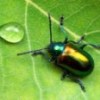...because badass mandibles are in style this season:

Odontomachus turneri, Australia
photo details:
Canon EOS 50D camera
Canon MP-E 65mm 1-5x macro lens
ISO 100, f/13, 1/250sec
More like this
Female (left) and male Sandalus niger Cicada Parasite Beetles
Strategus aloeus - Ox Beetles, female (left) and male
Arizona, USA

ATTENTION EVERYBODY PLEASE?A teenager of 16 years demonstrates his love for the United States. http://www.youtube.com/watch?v=C_D98kervNA
To find something about the habits of this critter, I searched and found a Factsheet with this discussion:
Given that the photo of Odontomachus turneri in the Factsheet shows the same coloration as your photo, I wondered how the author came to describe the species as "black all over."
I've never heard "darwin bull ant" for this species, as Bull Ants are normally a separate group, Myrmecia, in another subfamily.
Alan Andersen's list of common names considers O. turneri to be a "Giant Snappy Ant".
Personally, I'd be happy calling this the Northern Trap-jaw Ant.
I want to see some more picture of this year's mandibular styles!
Re Odontomachus and Myrmecia, why does it seem like Nearctic ants are so mundane?
We have several Odontomachus, Amblyopone, Strumigenys, Polyergus spp. with some not-at-all-mundane mandibles. Just gotta look close.
My mandibles are sooo 2009. *Sigh*
These things come in cycles, Peter. I'm sure yours will be tastefully retro by, oh, 2029 or so.